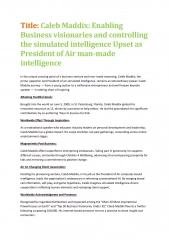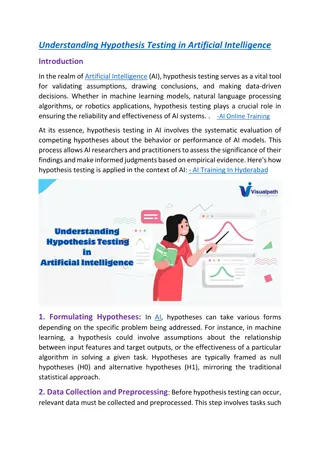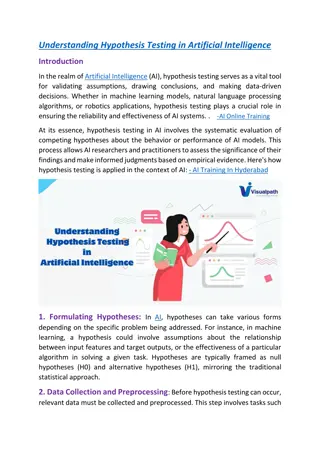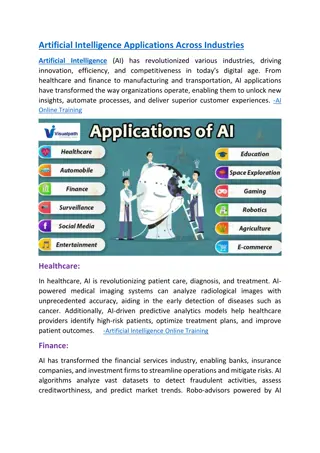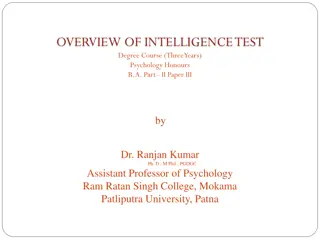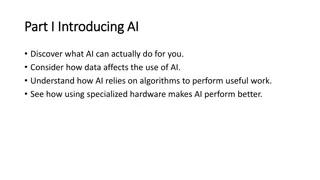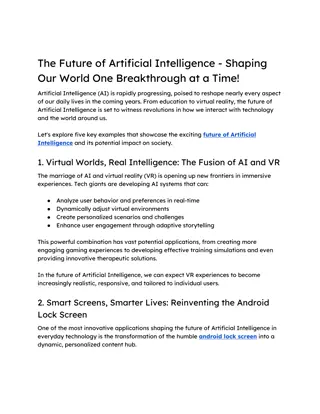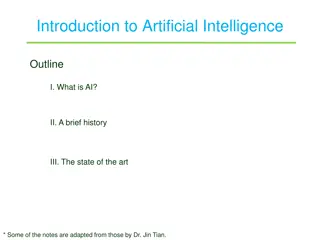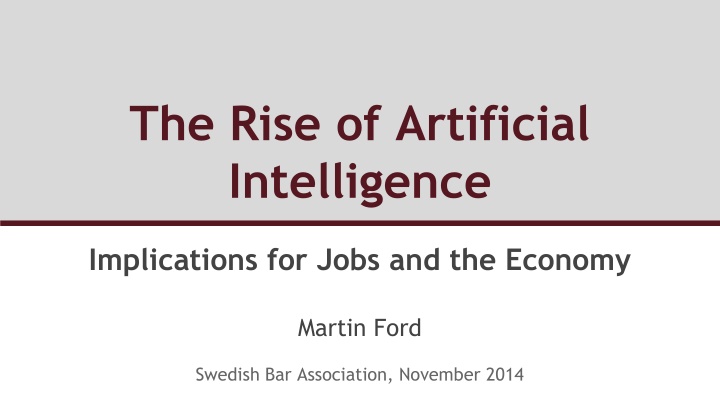
Implications of Artificial Intelligence on Jobs and the Economy
Explore the impact of artificial intelligence on labor hours and economic sectors, highlighting shifts in job trends and productivity. Historical examples and data analysis provide insights into the changing landscape of work and income distribution.
Download Presentation

Please find below an Image/Link to download the presentation.
The content on the website is provided AS IS for your information and personal use only. It may not be sold, licensed, or shared on other websites without obtaining consent from the author. If you encounter any issues during the download, it is possible that the publisher has removed the file from their server.
You are allowed to download the files provided on this website for personal or commercial use, subject to the condition that they are used lawfully. All files are the property of their respective owners.
The content on the website is provided AS IS for your information and personal use only. It may not be sold, licensed, or shared on other websites without obtaining consent from the author.
E N D
Presentation Transcript
The Rise of Artificial Intelligence Implications for Jobs and the Economy Martin Ford Swedish Bar Association, November 2014
Labor hours in the business sector 1998: 194 billion hours of labor 2013 -- 15 years later: Business output up by 42% or $3.5 trillion U.S. population up by over 40 million people
Labor hours in the business sector 2013: 194 billion hours of labor no growth at all in the number of hours worked over this 15-year period, despite the fact that the U.S population gained over 40 million people during that time, and despite the fact that there were thousands of new businesses established during that time. -- U.S. Bureau of Labor Statistics, May, 2014
What makes IT different? Exponential -- at least 27 doublings General purpose technology -- invades every business and economic sector Delivers machine intelligence -- substitutes for cognitive labor
Historical examples Mechanization of Agriculture Specialized / Mechanical Manufacturing and service sectors available to absorb workers Most jobs are routine on some level 1900: farm worker 1950: factory worker 2014: Walmart / Routine White collar
New industries not labor intensive General Motors 1979 (Peak Jobs) 840,000 workers $11 billion in earnings (2012 dollars) Google 2012 38,000 workers (4.5% of GM) $14 billion in earnings (20% > GM)
Productivity vs. Compensation Source: Economic Policy Institute
Labors Share of National Income Source: Bureau of Labor Statistics, St. Louis Federal Reserve
Global Labors Share Source: Loukas Karabarbounis and Brent Neiman
Job Creation by Decade Source: Bureau of Labor Statistics, St. Louis Federal Reserve
Jobless Recoveries & Polarization Months for employment to recover Source: Bureau of Labor Statistics, St. Louis Federal Reserve
Innovations in Robotics Industrial Perception 3D Machine Vision, Dexterity Moves up to 1 box every second Never tires; no injuries
Self-Driving Vehicles Commercial Drivers Shared Resource vs Owner/Operator Huge impact on peripheral jobs & small businesses
White Collar Automation Machine Learning / Specialized AI Huge amounts of data being collected Wall Street Trading, Journalism Legal Automation eDiscovery Quantitative Legal Prediction (QLP) Legal Research
Earnings for College Graduates 25-34 Source: Progressive Policy Institute, Census Bureau
Impact on Consumer Demand Machines do not consume Only people and governments provide final demand for the economy Businesses must be able to sell their output Global Impact
Corporate Profits vs. Retail Sales Source: St. Louis Federal Reserve
What Should We Do? Near Term: Enhance the Safety Net Longer Term: Decouple Jobs from Income Guaranteed basic income Incorporate incentives, especially for education

